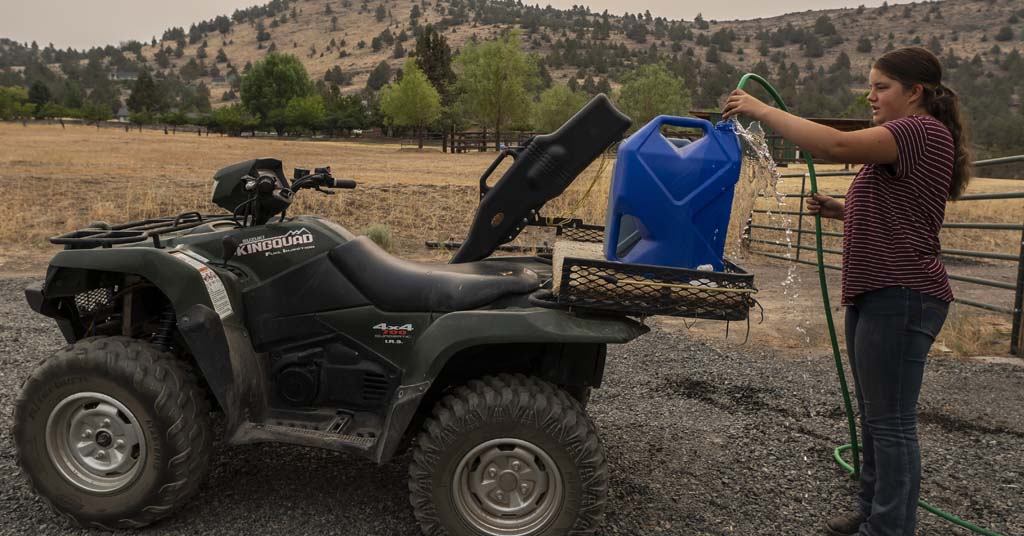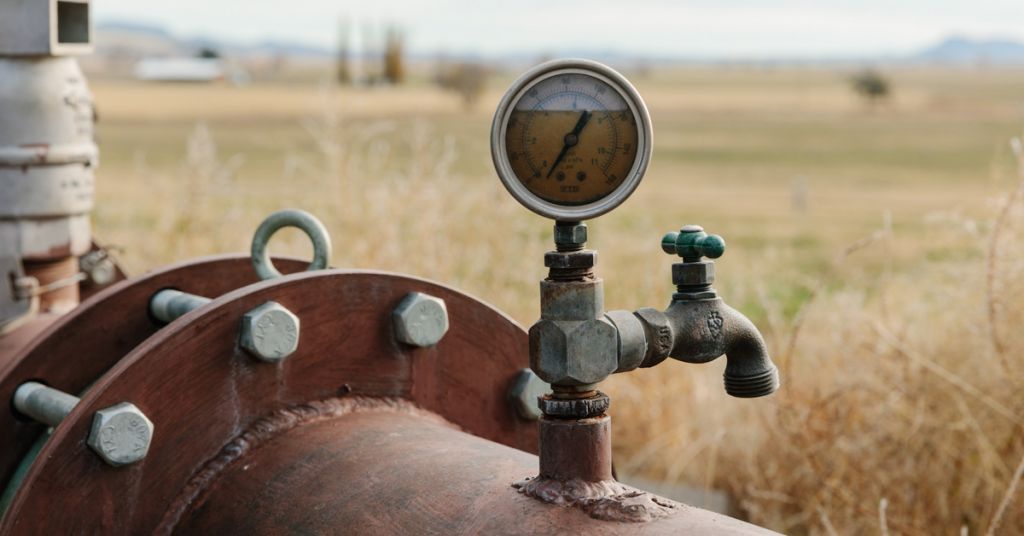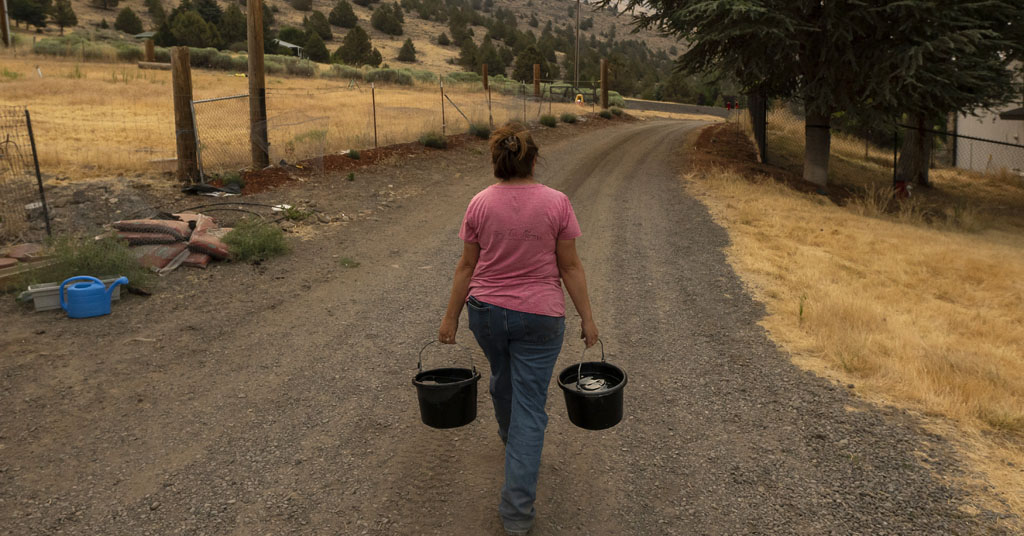How a continuation of extreme weather trends could alter the business, culture and very nature of the Pacific Northwest
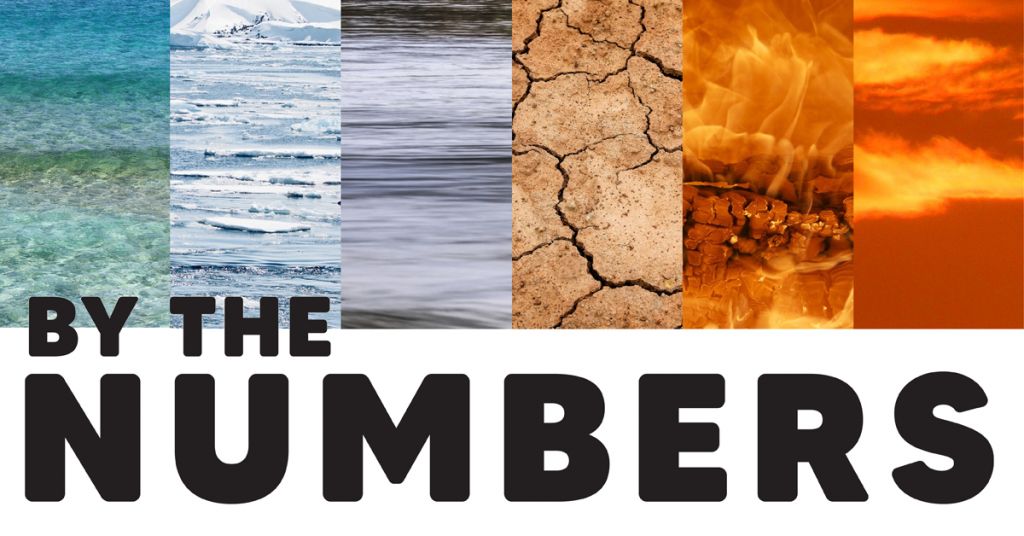
By Nathan Gilles. Graphics by Mackenzie Miller. January 12, 2023. Climate change is such a massive global issue it can be easy to forget it’s also a local problem. The numbers presented below represent only a handful of the grim implications climate change is predicted to have in our backyards and across the Columbia River Basin in the 21st century and beyond.
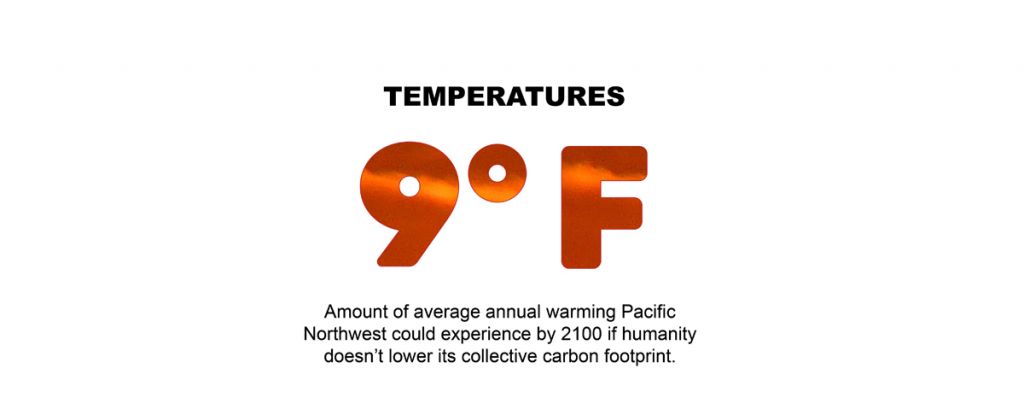
15° F
Maximum predicted above-normal warming the Pacific Northwest could reach by 2100.
1.08-1.44° F
Warming the Pacific Northwest has experienced over the last century.
To imagine what 5° F, 9° F or even 15° F of extra warming might do, consider the region’s dependence on water from melted snow. According to a 2017 study, 78% of water runoff in the streams and rivers of the Cascades comes from snow.
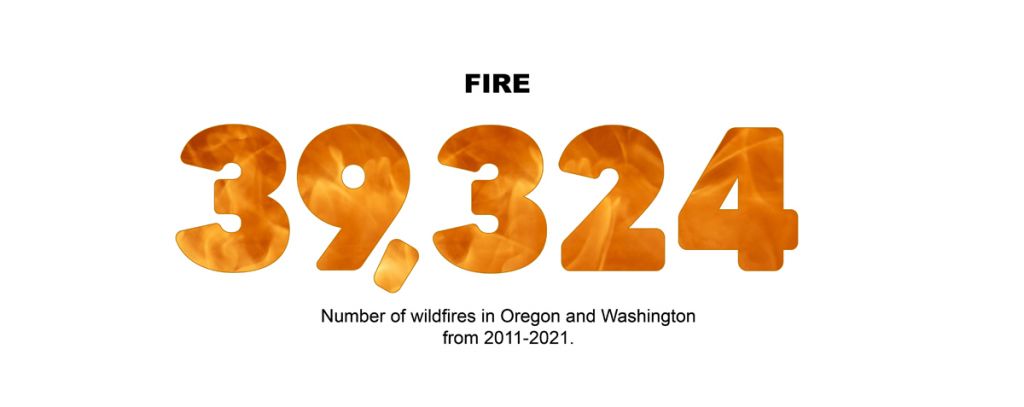
19,120 square miles
Total area burned in the two states over that same period.
2020
The largest fire season on record for Oregon and Washington, according to several indices, and a potential glimpse into the future. Over 1,500 square miles of forests burned in western Oregon during the 2020 Labor Day fires; 4,000 structures are estimated to have been damaged by fires; and 40,000 people were evacuated.
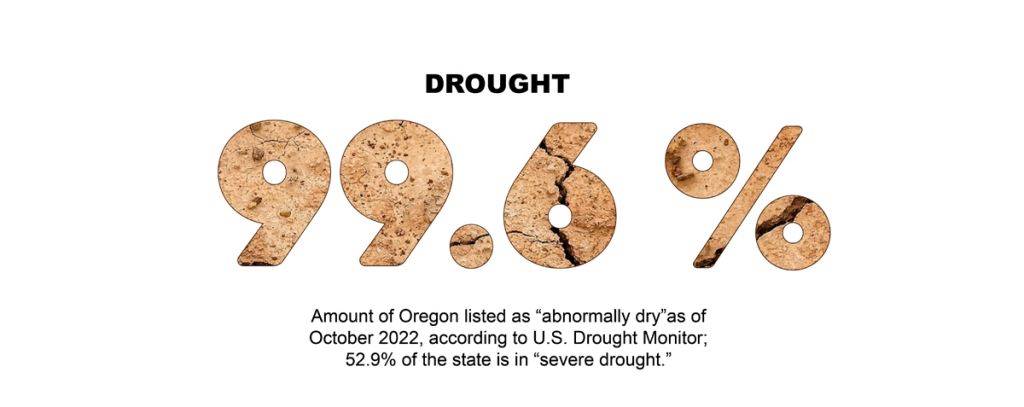
100%
Amount of Washington listed as abnormally dry as of October 2022, according to the U.S. Drought Monitor. None of the state was listed being in severe of extreme drought.
86.5%
Amount of Oregon listed as “abnormally dry” as of January 2023, according to the U.S. Drought Monitor; 46% of the state is still in “severe drought.”
62.3%
Amount of Washington listed as abnormally dry as of January 2023, according to the U.S. Drought Monitor.
Both Oregon and Washington ended the dry summer and fall months of 2022 in some form of drought. To date, the fall and winter rains haven’t helped much, especially in Oregon.
2
Decades Oregon and Washington have been in some form of drought.
2015
The warmest year on record for Oregon and Washington. As a harbinger of things to come, in 2015 snow depth in the Cascades was one foot lower than average; by April 1 virtually no snow existed below 5,000 feet in the Cascade and Olympic Mountains; snow levels in Oregon were 89% below normal (its lowest on record). In Washington, 2015 tied with 2005 for its lowest snowpack year on record; both states were 3.9° F warmer than average.
65%
Decline in mountain snow predicted for the Cascades in Oregon and Washington by the 2080s.
$633-773 million
Estimated economic impact of 2015 drought on Washington farmers.
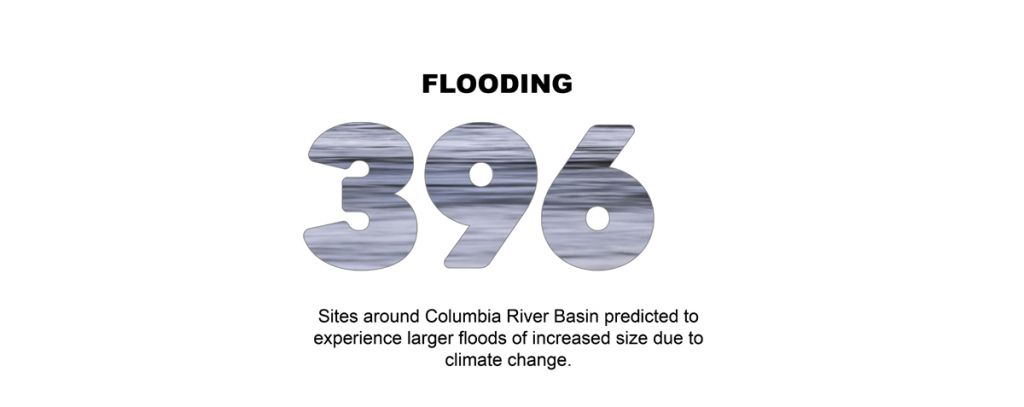
40%
Increase in size of rare but very large 100-year floods on the Willamette River near Portland.
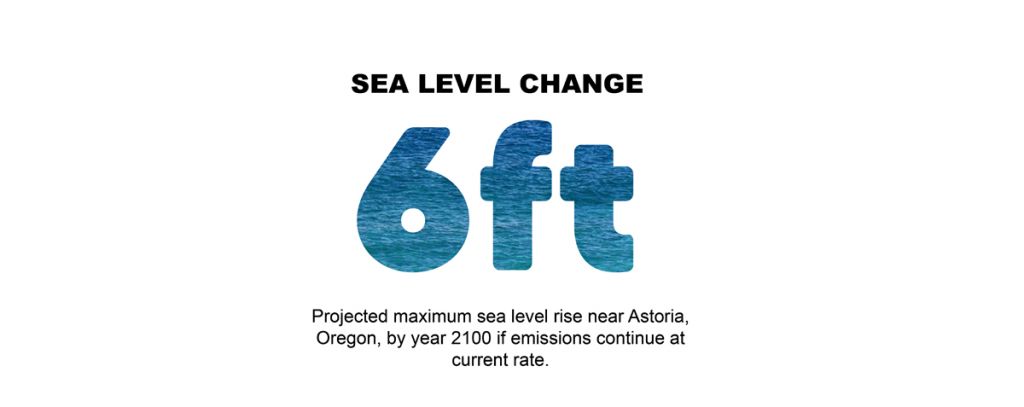
2100
The year 2100—sometimes called “end of century”—pops up a lot in climate studies. It’s the year most climate predications stop. As a consequence, it’s also the year most climate planning efforts stop.
But as a 2016 paper in Nature Climate Change points out, climate change won’t stop at 2100. In fact, according to the paper’s authors, “scientific emphasis on the expected climate changes by 2100 … has created a misleading impression in the public arena—the impression that human-caused climate change is a twenty-first-century problem.”

79-148 feet
Predicted rise in global sea levels over that 10,000-year period.
NOTE: To show change in, say, temperature, scientists often compare predicted future change against actual climate records—called historical baselines (1979–2015, 1955 to 2016, etc.). Baselines define “normal” or “historical” conditions, but they often differ from study to study. For brevity we don’t describe specific baselines unless they’re especially relevant to a particular finding.
Nathan Gilles is a science writer based in Vancouver, Washington.



